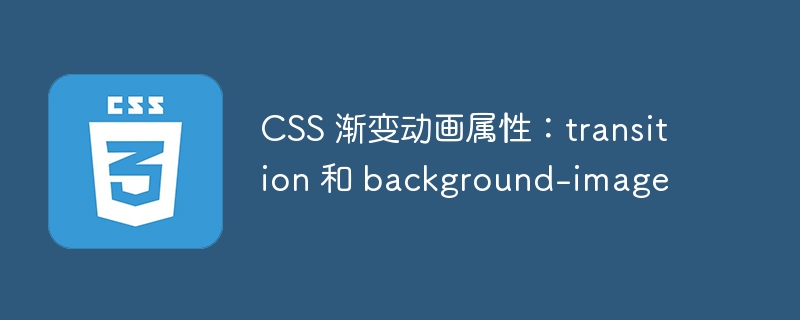Home >Web Front-end >CSS Tutorial >CSS gradient animation properties: transition and background-image
CSS gradient animation properties: transition and background-image
- WBOYWBOYWBOYWBOYWBOYWBOYWBOYWBOYWBOYWBOYWBOYWBOYWBOriginal
- 2023-10-27 13:18:431619browse

CSS gradient animation properties: transition and background-image
In web design, animation effects can add vitality and appeal to the page. CSS provides many properties for creating animation effects, including the gradient animation properties transition and background-image. This article will introduce these two properties in detail and give specific code examples.
- transition attribute
The transition attribute is used to achieve the effect of smooth transition of elements within a certain period of time. By specifying the properties, duration, delay time and speed curve of the transition effect, we can create a variety of transition animation effects.
Code example:
.box {
width: 100px;
height: 100px;
background-color: red;
transition: width 2s ease-in-out;
}
.box:hover {
width: 200px;
}In the above example, we define an element with a class name of .box and set the width to 100px. By setting the transition attribute, we specify that the transition width changes in an ease-in and ease-out manner within 2 seconds. When hovering over the .box, the width transitions to 200px.
The transition attribute can also specify multiple transition attributes at the same time, separated by commas. Here's an example:
.box {
width: 100px;
height: 100px;
background-color: red;
transition: width 2s ease-in-out, height 1s cubic-bezier(0.4, 0, 0.2, 1);
}
.box:hover {
width: 200px;
height: 200px;
}In this example, both the width and height transition to 200px on mouseover.
- background-image attribute
The background-image attribute is used to set the background image of the element. Combined with the transition attribute, we can create a gradient background animation effect.
Code example:
.box {
width: 200px;
height: 200px;
background-image: linear-gradient(45deg, red, yellow);
transition: background-image 2s ease-in-out;
}
.box:hover {
background-image: linear-gradient(45deg, yellow, blue);
}In the above example, we define an element with the class name .box, and set a linear gradient background for the element through the background-image attribute, from Red to yellow. By setting the transition attribute, we specify an ease-in and ease-out transition of the background image within 2 seconds. When the mouse is hovered over the .box, the background image transitions to a linear gradient background from yellow to blue.
To sum up, transition and background-image are two commonly used CSS properties, which can be used to achieve smooth transition and animation effects of elements. By using these attributes properly, we can add more dynamics and appeal to web pages. Hope this article can be helpful to you!
The above is the detailed content of CSS gradient animation properties: transition and background-image. For more information, please follow other related articles on the PHP Chinese website!

